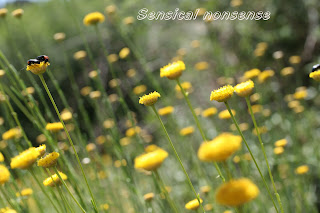Last Sunday I had a great day with some colleagues, and later in the day we went for a walk I am not the only insect/bug nut around here so we brought the camera to have a look. As I have said I is still quite early in the season but I still found some cool subjects. Viewers’ discretion is advised. It is springtime and that can only mean one thing...well several things, but this as well.
Locusta migratoria; a lot of reasearch is done on this Migratory locust. Here we see the male and female. Female is the larger one.
Carabidae and probably also a Carabus. With a little help and expert consult:
Carabus (Macrothorax) morbillosus
Esporles is as I mentioned where I work. It is a little town in a valley with a "torrente" meaning a river with only water when it rains. The geology of Mallorca is porous so when the rain comes it runs down and collects very fast into these rivers. It is also surrounded with mountains for walking in and discovering cool things. After work then a group of us took a trip walking up one of these mountains. It has a statue of Jesus on top (welcome to Spain) with one arm disproportionately larger than the other. Further up there is a small monastery. This is the view we were rewarded on the top of the mountain.
On the trip I was looking under every rock and looking on every bit of old wood I could come across. I found at least two different species of Isopoda. Another day I will find time to photograph them. One was from the genus Armadillidium. Those are the ones that roll up to an almost perfect ball. Also we found this Diplopoda which I am sure is a Julidae as the family, but I need more literature (keep coming back to that) before I can determine with some certainty. Diplopoda or millipedes belong to the Myriopoda and these are determined by the two paired legs per segment. Some of these secrete hydrogen cyanide as a defense mechanism. This has in some cases backfired as some monkeys rub them on their fur as a mosquito repellent roll-on. A great example of adaptation.
Diplopoda Julidae
And this one I am kicking myself for not flipping over and make sure but I think this is a Tenebrionidae after some expert advice. And perhaps it is in the genus Blaps and it might also be the species gigas.
That is all for now, But I surely will be bringing more posts in the near future. I will soon go for a trip home to Norway so I cannot promise anything for next two weeks. On the other hand I will surely have new material from the trip so stay tuned.














































